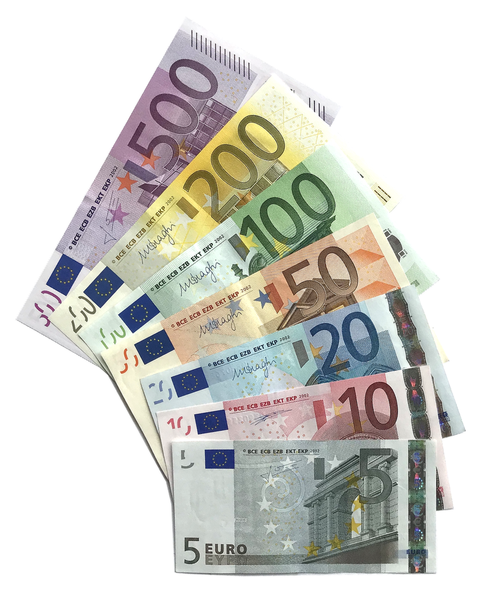The Euro - Europe's Single Currency
|
On January 1, 2002 the euro became the single currency of 12 member states of the European Union. Next to the US dollar it has become the most important currency in the world. There are seven bank notes ranging from the smallest, 5 euros, to the largest, 500 euros. The design competition was won by the Austrian Robert Kalina. The eight coins, ranging in value from 1 cent to 2 euros have different sizes and shapes so that you can better tell them apart. One side of the coin is the same in all member states, the other side has specific national symbols on them and designs that are different in each country. Currently there are twenty countries in the euro zone: Belgium, Germany, Greece, Spain, France, Ireland, Italy, Luxembourg, the Netherlands, Austria, Portugal, Finland, Estonia, Latvia, Lithuania, Malta, Slovakia, Slovenia, Croatia and Cyprus. Small countries like Monaco, the Vatican, San Marino and Andorra also use the euro as a form of payment. |
The first series of Euro banknotes |
Countries of the Eurozone (Kosovo and Monenegro use the euro as their official currency
but are not part of the Eurozone)
Image: Alphathon, CC BY-SA 3.0, via Wikimedia Commons
Advantages of the Euro
Many experts have argued over the past years that a single currency can help member states move closer together and unify the EU. But there are also other positive sides of a single currency:
- Businesses that traded with other EU countries were often not sure how much they had to pay in foreign currencies because the exchange rates often changed.
- Consumers can compare prices in different EU countries more easily.
- Tourists who cross borders on their way to holiday destinations no longer have to exchange their money.
- Through the euro, trade between countries has increased.
- Making payments to banks in other countries has become easier.
- The European Central Bank controls the amount of money in each country. The value of the euro is always the same , inflation is very low.
Problems and Challenges in the Eurozone
Throughout the years, there have been some challenges and problems within the Eurozone.
- Many people argue that the euro has made living more expensive in various countries. Prices have gone up.
- The financial crisis of 2008 led to economic problems in some EU countries. Hardest hit was Greece, which suffered a severe recession and received financial support from the EU
- Some nations including the United Kingdom, Sweden and Denmark have chosen not to introduce the single currency, because they fear it would weaken their independence and they would lose power in their own country.
